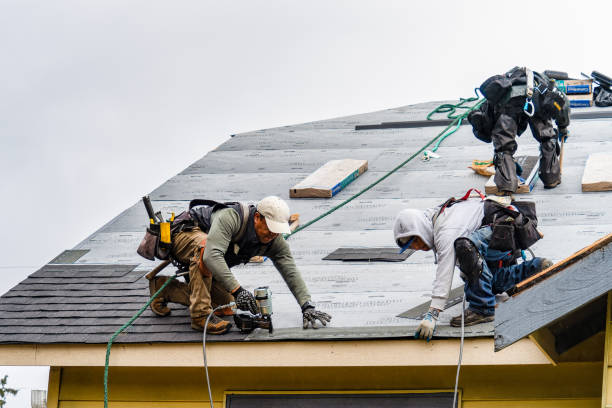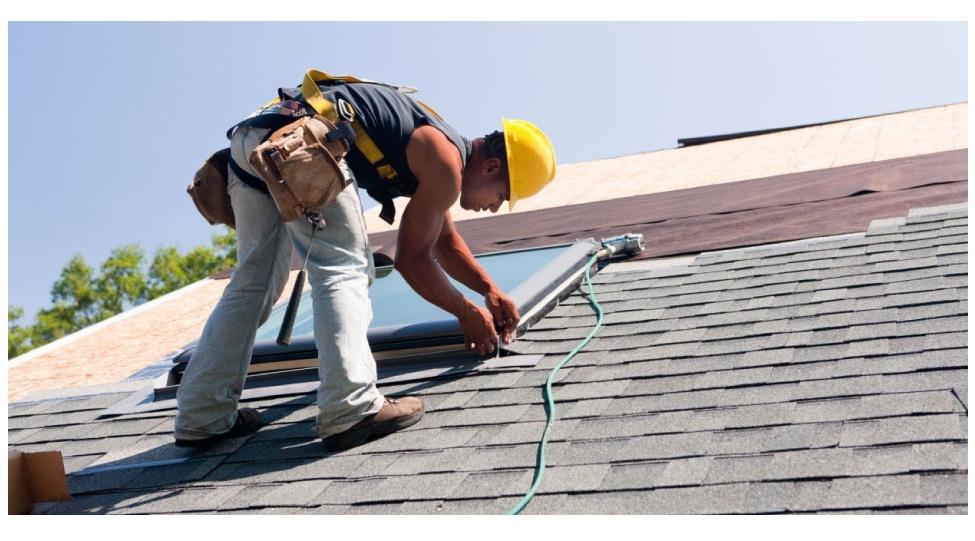Just How to Review Different Roof Covering Options for Your Building Needs
Assessing roof options for your building requires a thorough technique that takes into consideration numerous elements such as the meant use the structure, regional environment problems, and material attributes. It is necessary to evaluate the advantages and disadvantages of different roofing types, from asphalt shingles to steel and clay floor tiles, while additionally considering preliminary prices and long-term upkeep. Furthermore, comprehending power performance and visual charm can affect your choice. As you ponder these factors to consider, one concern continues to be: which elements will inevitably guide your selection for a lasting and aesthetically pleasing roofing option?
Evaluating Your Building's Demands
To effectively examine roofing alternatives, start by extensively evaluating your building's needs. Begin by considering the building's meant use, as various frameworks may demand varying roof specs. For example, residential roofs typically prioritize looks and insulation, while business buildings may focus on toughness and load-bearing capacity.
Next, review the regional climate problems that will affect roofing performance. Variables such as temperature level fluctuations, rainfall levels, and wind patterns can influence material selection and layout. A roof system that excels in a temperate environment may not perform as well in locations vulnerable to heavy snowfall or severe warmth.
In addition, examine the structural honesty of your building. Make certain that the existing structure can support the chosen roof materials, specifically if taking into consideration larger options. It is additionally essential to review any local structure codes or policies that might dictate specific requirements for roof.

Comparing Roofing Products
When a thorough analysis of your building's demands has been finished, the following step entails comparing various roofing products. Each material offers distinctive advantages and negative aspects, making it vital to straighten your selection with your particular needs and scenarios.
Asphalt shingles are extensively acknowledged for their affordability and ease of setup, making them a prominent choice for property buildings. On the various other hand, steel roof, recognized for its sturdiness and long life, can stand up to harsh weather but may feature a higher preliminary financial investment.
Clay and concrete ceramic tiles supply exceptional thermal insulation and visual charm, especially for Mediterranean-style architecture, yet they require a more durable structural assistance because of their weight. Wood drinks offer a natural appearance and excellent insulation properties but may demand extra upkeep and are susceptible to fire risks.
Reviewing Expense and Spending Plan
Analyzing your roofing options necessitates a mindful evaluation of expense and budget factors to consider. The total spending plan for a roofing project comprises numerous factors, consisting of material prices, labor costs, upkeep, and prospective long-lasting savings. It is vital to establish a clear budget prior to exploring certain roof materials, as this will certainly direct the decision-making process and help you prevent overspending.
Begin by acquiring quotes from multiple specialists to recognize labor prices in your region. Make sure that these price quotes include all required services, such as elimination of the old roofing system, installation, and any kind of additional functions, like insulation or ventilation enhancements - Toledo Roofer. Next off, assess the expense of numerous roof covering products, thinking about both preliminary installment prices and anticipated life expectancy

Recognizing Power Effectiveness
Energy performance plays a crucial role in the choice of roof products and systems, significantly impacting both power usage and general comfort within a structure. An appropriate roofing system can improve thermal performance, lowering the need for heating and cooling systems, which consequently lowers power expenses and reduces environmental influence.
When evaluating roof covering alternatives, think about materials that mirror instead than take in warmth. Additionally, proper insulation and air flow are necessary to enhance the power performance of the entire roofing system.
Another vital variable is the roof's durability and maintenance demands. Resilient products that call for less frequent substitute contribute to lasting energy savings. The energy effectiveness of a roof covering system can also be examined via its conformity with recognized sustainability rankings such as Power CELEBRITY or LEED.
Considering Visual Appeal
A roof's aesthetic allure considerably affects the general look of a building, matching its architectural style and improving visual charm. Roofer. When reviewing roofing alternatives, it is vital to consider how the selected material, color, and layout will integrate with the existing structure and area. A properly designed roof covering can elevate even the easiest of buildings, transforming them into visual centerpieces
Various roof products supply various aesthetic qualities. For instance, typical shingles may stimulate a timeless charm, while metal roof can give a modern, smooth appearance. In addition, the color of the roof covering material plays a vital function; lighter shades can make a structure show up more roomy, while darker tones might produce a cozier setting.
In addition, building aspects, such as dormers and eaves, can boost the roof's aesthetic impact. It is suggested to speak with specialist developers or designers to make certain the selected roof covering alternative click to read more lines up with the total layout intent. Eventually, a roofing ought to not only supply practical benefits yet likewise contribute positively to the building's visual, showing the proprietor's taste and the character of the surrounding setting.
Final thought
